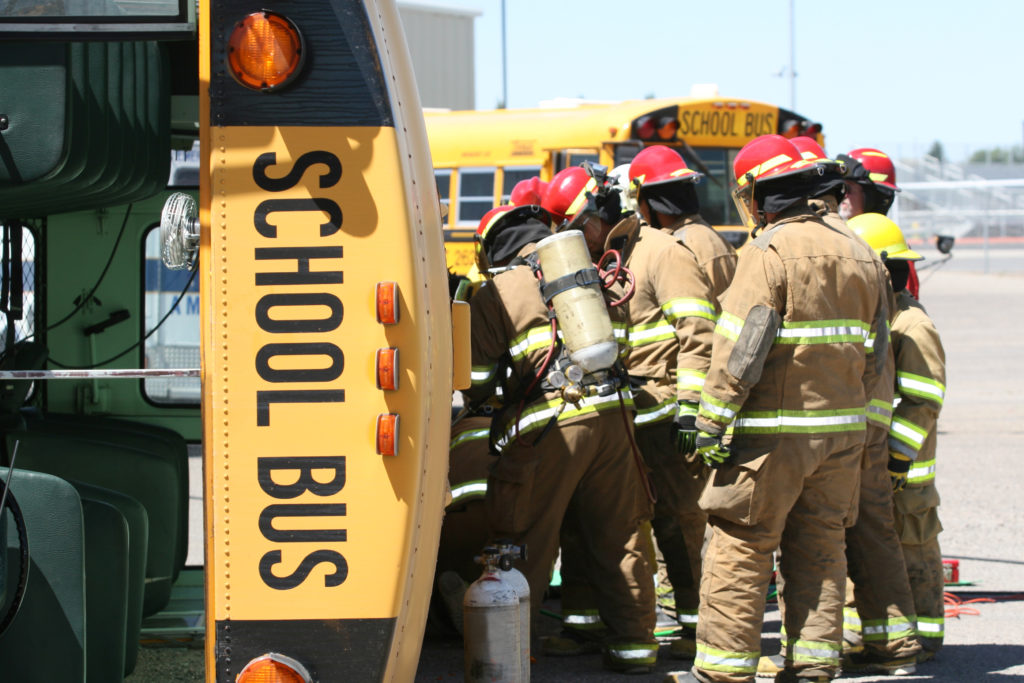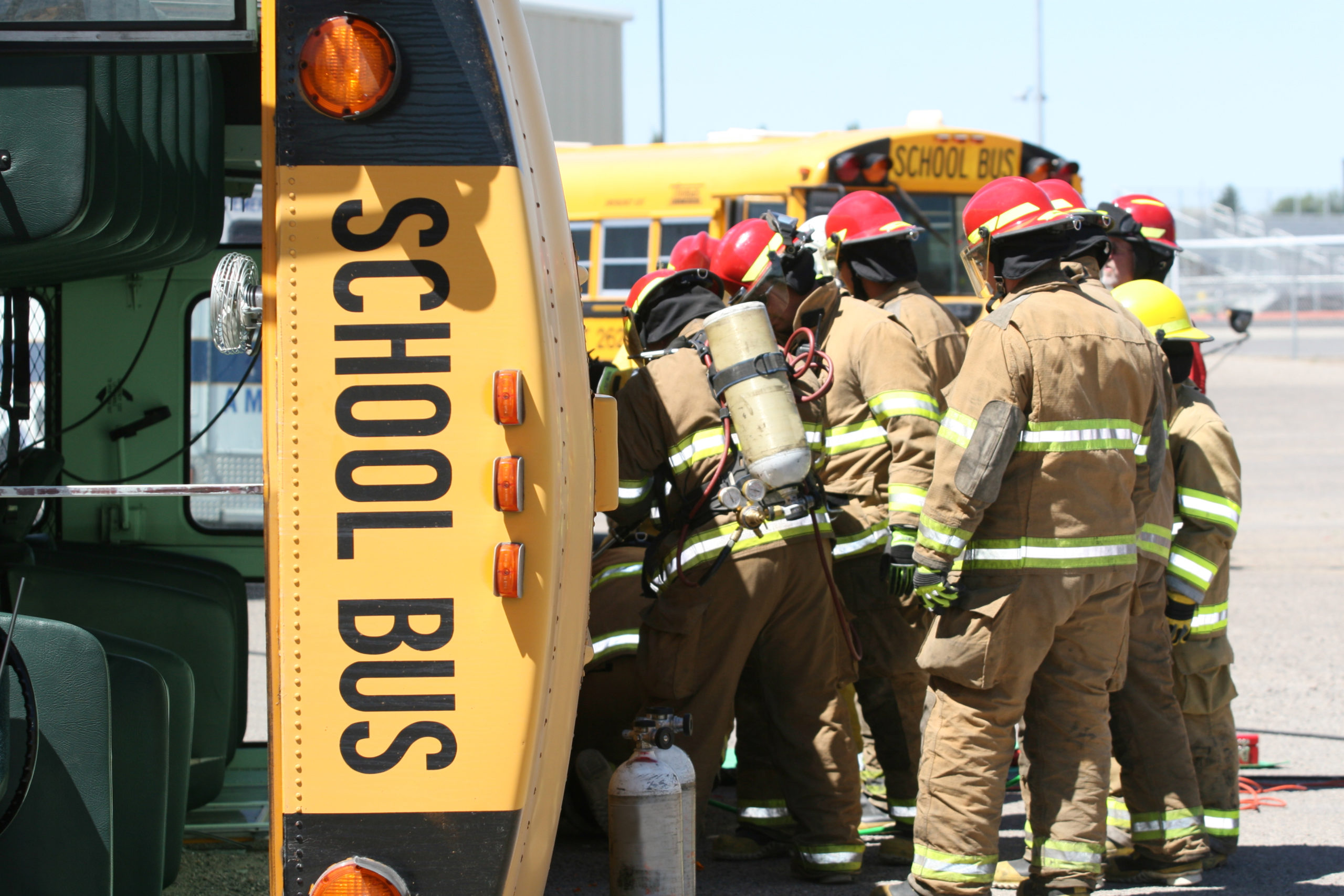
Whether they’re in the heart of New York City or up in Central New York, anyone who chooses to ride a bus in New York is entrusting their safety to another driver, who was hired by a professional company. Unfortunately, that trust can be shattered if an accident occurs and riders suffer serious injuries as a result. Thankfully, victims of a bus accident may be entitled to monetary compensation for personal injuries, whether through an insurance policy or a lawsuit.
What to Do After a Bus Accident
A bus accident is almost always a disorienting experience for the victims who live through them. Immediately after an accident, if you do not appear too injured, call the police if no one else has done so. It is important that the accident is reported as soon as possible, as any accident must be reported by law. It also has the benefit of allowing you a fresh and immediate recollection of the event if you provide a statement to the officers who show up at the accident scene. However, if you or your fellow passengers are severely injured, it is understandable to seek medical attention first and speak with the police at the hospital.
The steps you should take after a bus accident are much the same as those you would take if you were involved in a crash while driving your own car. As you wait for the police, begin documenting the event. Take photos or videos of the scene, collect contact information from the drivers involved and other passengers, and begin noting down the various details of the accidents. Once you have spoken with the police and provided your information to them, seek medical attention for your injuries. A doctor’s statements and records will be vital when you approach your insurance company for coverage or speak with an attorney about pursuing a lawsuit.
Finally, unless you have an attorney present, do not speak with another party’s attorneys or investigators. Large bus companies, both private and public, will have attorneys and investigators seeking the best resolution for the company, not you. Do not agree to a meeting and do not answer their questions as they may seek to mislead you and undermine your case.
What Will Insurance Cover?
To answer this question, an injured passenger must understand if they are covered under their own auto insurance policy. New York has clearly set rules and regulations in place to help eliminate the need for legal action in the event of an accident, and usually, that need is stopped specifically by one’s own auto insurance policy.
Under NY Ins L § 5103, a statute in the state’s Insurance Law, if a victim is a named insured or relative under any policy providing the required no-fault coverage for automobiles in the state, a bus company and its insurer are not required to pay first-party benefits (also known as personal injury protection benefits) for the personal injuries sustained by the victim while occupying a bus or school bus. This is because every auto insurance policy in New York provides first-party benefits to the insured regardless of fault, thus limiting a victim’s right to sue in exchange for guaranteed coverage.
In the event that a victim is not covered by such a personal auto policy, then a bus company or its insurer is responsible for paying the first-party benefits. Every bus company is required by NY Veh & Traf L § 312 to provide proof of insurance when registering their vehicles in the state of New York. They may satisfy this requirement through a commercial auto policy with an insurance company or through a certificate of self-insurance where the company is able to financially cover themselves.
In either case, the first-party benefits of an insurance policy will cover the basic economic losses of your personal injuries. These losses can include medical expenses, lost wages, and similar costs up to a maximum of $50,000 dollars. Additionally, every commercial auto insurance policy must include liability coverage in varying minimum amounts depending on the circumstances of an accident. All policies must also provide uninsured motorist coverage in equal minimum amounts as the minimum amounts required for liability insurance, in order to cover accidents with uninsured vehicles or hit-and-run motorists.
The following table shows how much minimum compensation can be paid out by liability coverage and uninsured motorist coverage in different scenarios.
| Number of Personal Injuries/Deaths | Minimum Compensation Amount |
| One victim injured | $25,000 |
| One victim killed | $50,000 |
| Two or more victims injured | $50,000 |
| Two or more victims killed | $100,000 |
If you are not covered by a personal auto accident policy, suffered economic losses in excess of $50,000, or have suffered a serious injury that inflicted substantial non-economic losses upon you, you will be able to make a claim against the at-fault driver and company. If you sue for economic losses, be aware that you cannot sue for your initial $50,000 that was covered by first-party benefits. You can only sue for the excess amount, while your insurer can sue for the initial $50,000.
If you suffered excessive economic losses or experienced a serious injury, the at-fault party’s liability insurance will cover you. However, if they refuse coverage for the accident, you will need to pursue a lawsuit against them as allowed under the law.
What Is Considered a “Bus” and a “School Bus”?
As NY Ins L § 5103 gives certain exemptions for busses and school busses for paying the first party benefits of a personal injury victim, it is important that you understand exactly what these vehicles are under the law, and what vehicles are not necessarily included. The law gives definitions for busses, school busses, and similar vehicles under Article 1 of the Vehicle and Traffic Law. This helps to explain what vehicles are granted these exemptions.
- Articulated busses: Covered under NY Veh & Traf L § 100-C, these are effectively two busses connected by a flexible yet sturdy coupling to make a single bus. You may have seen these vehicles in your daily commute without realizing it, as they are effectively two busses connected by some form of flexible yet safe bridging between the back of one unit and the front of the other.
- Busses: Covered under NY Veh & Traf L § 104, these refer to the standard bus that you typically see used for public transportation in cities. They include any motor vehicle with a seating capacity of fifteen or more in addition to the driver.
- Omnibusses: Covered under NY Veh & Traf L § 126, these are any motor vehicle used in the business of transporting passengers for hire, except those used for transporting agricultural workers to and from their employment.
- School busses: Covered under NY Veh & Traf L § 142, these are motor vehicles owned by a public or governmental agency, or private school and operated for the transportation of students, children of students, teachers, and chaperones to and from school and school activities. They may also be privately owned and operated for compensation for the same purpose.
- Trolley busses: Covered under NY Veh & Traf L § 157, these are motor vehicles not operated on rails or tracks, are propelled by electric power received from overhead trolley wires, and operated by a person or corporation subject to the jurisdiction of the public service commission.
When you are in a bus accident, you need to consider which of these categories the “bus” really falls under. There is a great deal of overlap between busses and articulated busses, but omnibuses do not necessarily need fifteen or more seats and, therefore, would not qualify as a bus. This is part of the reason why it is important that you note all the details possible about the vehicles involved in an accident, as it may determine if your insurance coverage or the at-fault party’s coverage will pay for your injuries.
What if You’re Injured by a Bus but Not as a Bus Passenger?
Once again, this depends on if you are covered by a personal auto insurance policy. If you are not the named insured or a relative of one on an auto insurance policy, your first-party benefits should be paid for by the bus owner’s insurance provider. If your economic losses exceed $50,000 or you suffer a severe injury, then you are allowed to make a claim against and sue the at-fault party, including bus drivers and owners.
Be aware that, if you are stepping onto or off of a bus, you are still covered under their insurance policy if an accident occurs in that moment. Manuel v. New York City Tr. Auth. saw the plaintiff injured due to falling into a hole as she was stepping off a bus. The negligent parking of the driver which obscured the hole and did not allow the plaintiff to step onto the curb directly was found to be the cause for the accident.
While the appellate court did order that the case be retried in order to prove that her serious injury was caused by the accident under no-fault statutes, they did not question the potential applicability of first-party benefits to the case based on her stepping off the bus. In the court’s eyes, the negligent behavior of the driver leading to the accident and the plaintiff not being fully off the vehicle when the accident occurred meant that the first-party benefits of either a personal or commercial auto insurance policy could apply.
Personal Injury Cases Against Public Entities
It is entirely possible to bring personal injury lawsuits against public entities in the state of New York, whether in regards to a bus accident, a car accident, or boating accident. Manuel v. New York City Tr. Auth. and Feneque v. MTA Bus Co. are both good examples of this, as they both involved plaintiffs suing government agencies for negligent behaviors that served as the causes for their injuries in bus accidents.
In fact, New York is perhaps one of the easiest states to bring a lawsuit against a public entity in, as the state waived its right to sovereign immunity by passing the Court of Claims Act. By waiving this right, New York allows the courts to apply liability against the state in the same way an individual and corporation would have liability applied against them. Rather than a defendant needing an exception to prove their right to sue government entities, government entities of the state must provide exceptions that disallow the right to sue for personal injuries.
However, the Court of Claims Act does enforce certain rules governing how a lawsuit should be brought against a government entity, and those rules are more strict than those for lawsuits brought against private entities. It is best that you speak with an attorney before pursuing a case against the government, as they can walk you through the process in greater detail. Among the many things to consider:
- When suing a state entity, you must file your claim with the New York State Court of Claims within 90 days of the accident, unless you or your legal representative serves the attorney general a written notice stating your intent to file a claim. If you serve the attorney general a written notice, you have two years from the date to file a claim for the incident.
- When suing a municipal corporation, you must file your claim with the municipal corporation itself or give written notice of your intent to the municipal corporation within 90 days of the accident. If you give written notice, you will have two years from the date to file a claim. The case will be heard in the Supreme Court or the County Court rather than the New York State Court of Claims.
Determining Liability
As a pure comparative fault state, New York has empowered its courts to determine compensation amounts proportional to liability for personal injuries. For this reason, it’s important that you take every step to prove the liability of an at-fault party, as this will determine how much compensation you receive. However, this is not often a simple matter when a bus accident occurs due to the number of people that can be involved, and it is best if you speak with an attorney immediately so that you can go over the facts of the case together and understand who to sue.
Oftentimes, accidents are caused by a driver making a poor decision that heightens the risk of, and ultimately causes an accident. If this is the case, the company may be liable as well as the driver if the driver was intoxicated or taking medications that inhibited their ability to operate a vehicle. A company is responsible for making sure that their drivers are trained and prepared for driving their vehicles every day, and a failure to do so breaches their duty to ensure the safe transportation of riders.
If another vehicle collides with the bus, then you will need to consider the other vehicle’s driver as a potentially liable party. Their actions may have been reckless or negligent, and if so, they should be held responsible for part of your compensation as well.
The police reports and the accident documentation performed after an accident are all good starting points for determining fault. With these, you have a good base of evidence to draw from to reconstruct the moments leading to, during, and immediately after a crash. Additionally, all of the contact information you gathered will allow your attorney to call eyewitnesses to the stand and to verify if the drivers involved had safe driving records before this crash occurred.
Bus Accident Statistics
Every year, thousands of bus accidents occur in the state of New York and the nation as a whole. The Bureau of Transportation Statistics estimates that there were 60,000 bus accidents nationwide in 2018. According to the New York Police Department, over 200 busses were involved in accidents in November 2020 alone. Assuming 200 is the average per month for New York City, that means over 1,200 bus accidents will occur in the city in a single year. Bus accidents are commonplace, and they can be dangerous for both drivers and passengers.
Buses are heavy and difficult to drive without proper training. If an ill-trained driver gets behind the wheel, he/she may be risking the lives of his passengers. But poor driving skills are not the only cause of accidents and injuries on buses. The top seven causes of bus accidents are:
- Driver error
- Weather conditions
- Lack of seat belts or other safety equipment
- Faulty emergency exits
- Dangerous roadways
- Flammable seat cushions
- Improper maintenance
Frequently Asked Questions
Yes, but one must send a “notice of claim” letter stating one’s intent to sue a public entity within 90 days of the accident.
If a child is injured in a school bus accident, parents can potentially sue the school district, the bus company (if it is a private contractor for the district), and the driver.
This depends on the complexity of your case and if you settle out of court or go to litigation. Assuming that you are not seriously injured and you are covered by a personal auto insurance policy, your insurer should pay your first-party benefits within a few days or weeks of making a claim for them. First-party benefits are generally easy to get, and unless the circumstances of your accident are unclear, insurers will pay out and pursue a lawsuit of their own against the liable parties.
If you decide to pursue a lawsuit, your attorney will begin gathering information and negotiating with the at-fault party’s legal representative. Negotiations may get underway before and after eyewitness testimony and police reports are secured, and insurance claims have been made. Throughout the process, offers and deals may be presented based on the facts, and they may be rejected or accepted as both parties see fit. As such, pre-litigation negotiations alone can take anywhere from a few weeks to six months.
Most cases will be settled out of court through negotiations, but there are always exceptions. If it proceeds to litigation because the parties involved fail to agree on a settlement amount, the legal process of discovery will begin. This may take anywhere from a few months to an entire year, and negotiations will continue during this period as well.
Once discovery has taken place, all relevant information and arguments will be presented to a judge and jury for consideration. Your attorney will work to prove the validity and strength of your claims before an impartial set of arbitrators, and this may take another several months to a year. Finally, if a judgment is rendered by the court without a negotiated settlement, either party may appeal it to a higher court for consideration.
All in all, receiving compensation for your injuries could take anywhere from a few weeks to several years depending on the complexity of a case. However, do not be persuaded by an insurance company to accept a quick and easy settlement before speaking with an attorney. By accepting settlement, you give up your right to pursue further legal action in the matter, even if you are underpaid for the injuries sustained. Always speak with an attorney experienced in personal injury cases and boating accident cases before making key decisions.
Who Should I Contact if I’ve Been Injured in a Bus Accident?
You have a right to safe transportation! If you were injured by a bus, e-mail or call 888-883-5529 to speak to a New York bus accident lawyer from Rosenblum Law. We have been helping personal injury victims from New York bus accidents for many years. We will fight to ensure that you are fairly compensated.










 888-815-3649
888-815-3649
